17 September 2019
See the updates for SFG Larger Mammals - they are all valid for this book title as well.
01. July 2019
Riverine Rabbit - Bunolagus monticularis:
Was photographed recently with a camera trap in the western section of the Baviaan's Kloof, Eastern Cape.
Galagoides nyase:
Occurs in southern Malawi and adjacent area of Mozambique, call is distinct. It was previously placed with G. moholi.
Felis silvestris libyca has again been classified back to Felis libyca.
Acomys muzei
has been split away from Acomys spinosissimus and it occurs in north-east Zambia.
09. June 2019 - African Brush-tailed Porcupine - Atherurus africanus:
New record for Zambia in North-western Province Mwinilunga District.
7. November 2018:
Himalayan Tahr:
There are still sightings reported in Table Mountain National Park despite past culling efforts.
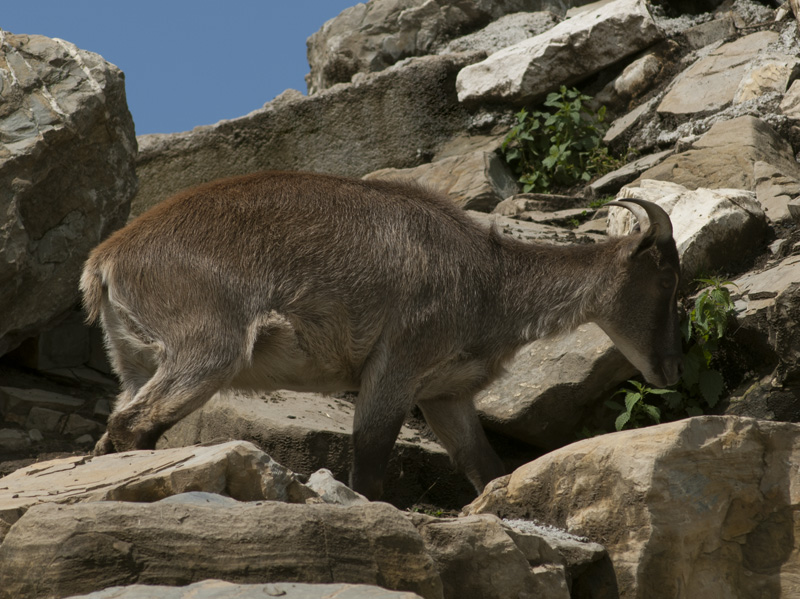
Barbary Sheep:
Occur in Carnarvon area and elsewhere as captive and feral populations.
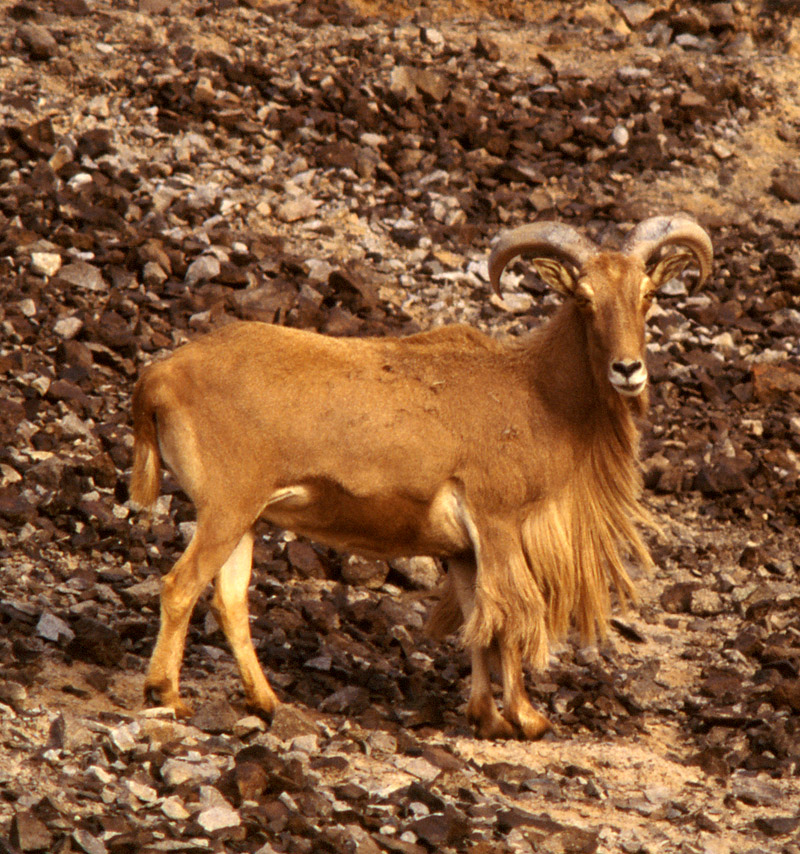
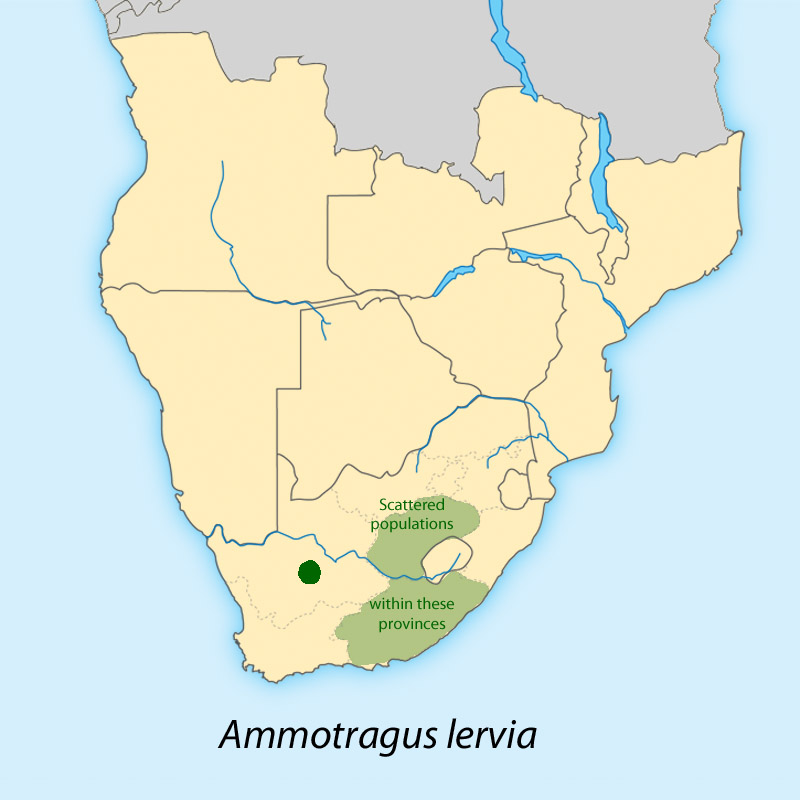
Antarctic Fur Seal - page 372:
There are now 3 South African records:
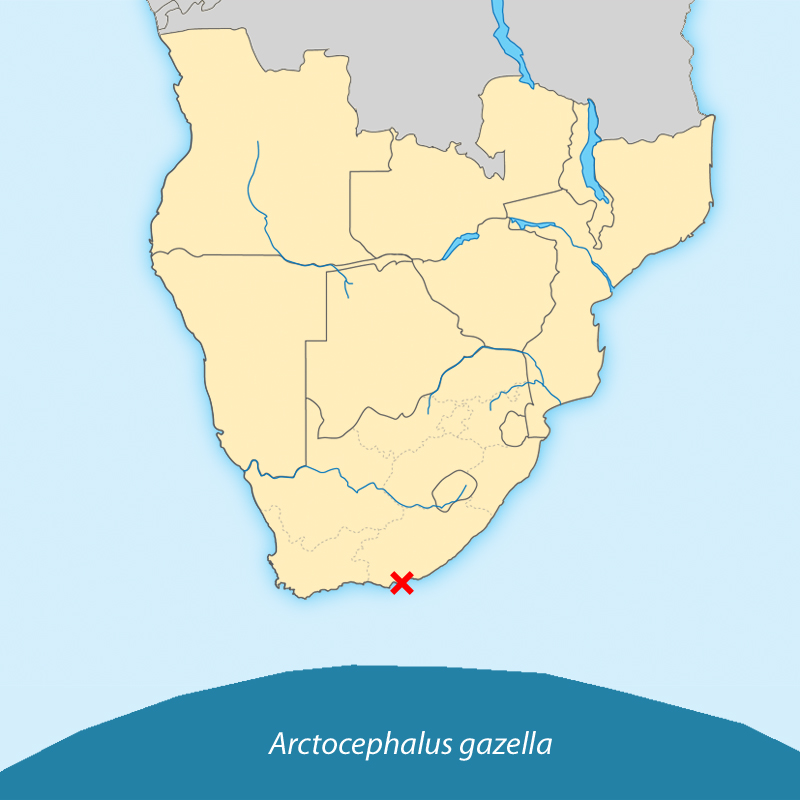
Black Rat - Brown Rat - page 215:
The captions identifying the live animals are incorrect: the image left top is the Brown Rat and the image beneath the Black Rat.
Rhinolophus spp - page 80-82:
Rhinolophus landeri in Mozambique has now been named Rhinolophus lobatus. In addition 2 new species have been described: Rhinolophus gorongosae only known from the national park of the same name in Mozambique. Rhinolophus rhodesia has been described and is known so far from northern Mozambique and other areas of southern Africa, but distribution limits are not well enough known to present distribution maps.
21. July 2018:
Recent evidence indicates that the newly described Deraniyagala's Beaked Whale (Mesoplodon hotaula) occurs around western Indian Ocean islands (Seychelles, Mauritius) and may in time be found off the eastern African coastline. Previously placed with the Ginko-toothed Beaked Whale but separated on genetic grounds. It is known from 7 specimens and several sightings off the Maldives.
7. May 2017 - New taxonomy Papio kindae:
The former subspecies of the Yellow Baboon Papio cynocephalus kindae is now recognized as a full species, the Kinda Baboon Papio kindae. It occurs predominantly within Southern Africa north of the Cunene and Zambezi Rivers. Much of its range falls into the Miombo belt across Angola, much of Zambia west of the Luangwa Valley, southern DRCongo and in a narrow strip on the eastern shore of Lake Tanganyika to about Mohale National Park.
They differ from other baboon species genetically, morphologically and in certain behaviour patterns. In the north-east of their rangethey interbreed with Papio cynocephalus and in the south-west with Papio ursinus.


25. April 2017 - Recent taxonomic changes:
Newest research places the two jackals (black-backed and side-striped) into a new genus: Lupulella mesomelas (insteadt of: Canis m.) and Lupulella adusta (instead of: Canis adustus).
25. September 2016 - Updates:
Savanna Elephant - page 284: 2016 population figure = 350,000 - lost 30% of population between 2007 and 2014.
Lechwe - page 328: TL 1.6 - 2.1 m
Paracynictis selousi - page 242: mammae 2-3 pairs
Herpestes flavescens - page 244: TL 66-72 cm, T 32-36 cm, Ear 2.4-2.8 cm, Weight about 850 g.
African Golden Cat - page 274: TL 85-135 cm (NOT 1.7 - 1.35 m)
Aardvark - page 282: SH 60 cm
Grammomys kuru - page 204: Two records from Angola. Grammomys poensis may also be present in Angola but much confusion between this and G. kuru.
Hylomyscus heinrichorum - page 210: Mt. Moco, Western Angola.
Mus musculoides - page 200: has recently been confirmed as been present in parts of southern Africa but not as yet clearly defined. Can only be separated from Mus minutoides by molecular factors and not physical appearance. The two cannot be separated in the field. Mus sorella recently confirmed as occurring in Angola.
Myosorex meesteri - page 50: Recently described from Eastern Highlands, Zimbabwe and adjacent area of Mozambique. Also from Mt. Gorongoza, Mozambique. (New map for this and Myosorex gnoskei will be provided later.)
Lophuromys flavopunctatus - page 212: may occur in southern Africa but uncertainty exists. In Angola now Lophuromys angolensis.
Rattus rattus - page 214: Previously only Rattus rattus recognized in southern Africa but recent records also indicate the presence of Rattus tanezumai.
Update for Giraffe - page 308 - 12. September 2016:
New molecular research has shown that 4 distinct species of giraffe can now be recognized across their African range. In southern Africa there are now 2 species, the Southern Giraffe (Giraffa giraffa) with two subspecies - Angolan (Giraffa giraffa angolensis) and Southern (Giraffa giraffa giraffa). Thornicroft's Giraffe in the Luangwa Valley, Zambia is now known to be an isolated form of the Masai Giraffe (Giraffa tippelskirchi).
A few changes and additional information - 19. January 2016:
Page 15: Map parks
Zambia: 5-Liuwa Plains / 8-Bengweulu
Zimbabwe: 19-Gonarezhou
Namibia: 29-Bwabwata / 30-Khaudom
Page 36:
Congo Golden Mole Huetia (Calcochloris) leucorhinus
Page 38:
Robust Golden Mole, Amblysomus robustus, mass 61-98g
Page 44:
Peters's Short-snouted Sengi Elephantulus fuscus, tail 8.6-11.6 cm
Page 64:
Franquet's Epauletted Fruit-bat Epomops franqueti, forearm 9.3 cm (not 93.5 cm!)
Page 68:
Hammer-headed Fruit-bat Hypsignathus monstrosus, Reproduction: At least in parts of range a seasonal breeder.
Page 69:
Bottom right image - Hammer-headed Fruit-bat female.
Page 74:
Percival's (Short-eared) Trident Bat Cloeotis percivali, wingspan 19-23 cm.
Page 102:
Description line 3: ....(M. moloneyi) NOT (M. thomasi)
Page 142:
Lord Derby's Scaly-tailed Squirrel Anomalurus derbianus Mammae 2 pairs (not 1).
Page 162:
Common (African) Mole-rat Cryptomys spp: based on genetics now divided into 5 species.
Page 186:
Spiny Mice Acomys: Populations of Acomys spinosissimus are now split to include Acomys selousi in south of range but exact range boundaries are not defined. It cannot be seperated in the field
Page 192:
African Grass (Kusu) Rat Arvicanthis niloticus - mammae: 3 pairs.
Page 198:
Big-eared Swamp Rat Malacomys longipes - Mammae: 3 pairs
Page 204:
Tree Rats Thallomys - mammae: 2-3 pairs
Thicket Rats Grammomys - mammae 2-3 pairs
Page 206:
Groove-toothed Swamp Rats Pelomys - mammae: 4 pairs
Mill Rat Mylomys dybowskii - mammae: 4 pairs
Page 208:
Rudd's Mouse Uranomys ruddi - mammae: 6 pairs
Page 210:
Angolan Wood Mouse Hylomyscus carillus - mammae: 3-4 pairs
Montane Wood Mouse Hylomyscus denniae - mammae: 4 pairs
Page 212:
Common Rufous-nosed Rat Oenomys hypoxanthus - mammae: 2-4 pairs, usually 3 pairs
Page 226:
Black-backed Jackal Canis mesomelas - mammae: 2-4 pairs abdominal/inguinal
Page 324:
Gemsbok (Southern Oryx) Oryx gazella - total length 2.2-2.5 m
Page 328:
Lechwe Kobus leche total length male >2 m, female > 1.9 m
Page 334:
Black Wildebeest Connochetes gnou
Male total length 2.2-2.6 m; tail 46-61 cm
Female total length 1.9-2.3 m; tail 42-56 cm
Page 370:
Cape Fur Seal Arctocephalus pusillus - female mass most in range of 40-80 kg
Page 414:
Indian Humpback Dolphin Sousa plumbea no longer S. chinensis.
OMURA'S WHALE - Balaenoptera omurai - NOVEMBER 2015:
Very recently a new whale species has been added to the Southern African marine mammal fauna, Omura's Whale (Balaenoptera omurai ). It was long thought to be a smaller form of Bryde's Whale but has closest genetic affinities to the Blue Whale. It was first described in 2003 from specimens from the western Pacific and eastern Indian Ocean. To compound matters it closely resembles the Fin Whale in general physical appearance (including the white markings) but is in the length range of 8-12m. It is now known to occur in waters off north-western Madagascar. Unlike other rorquals it is believed to be sedentary in warm waters and non-migratory. An Omurai's Whale recently beached on the Mauritanian coast in the Atlantic Ocean and genetic tests showed it to be this species, opening the possibility that it is much more widespread than previously thought. Given its range of north-west and possibly southern Madagascar it seems likely that it will be found to occur in southernAfrican coastal waters.
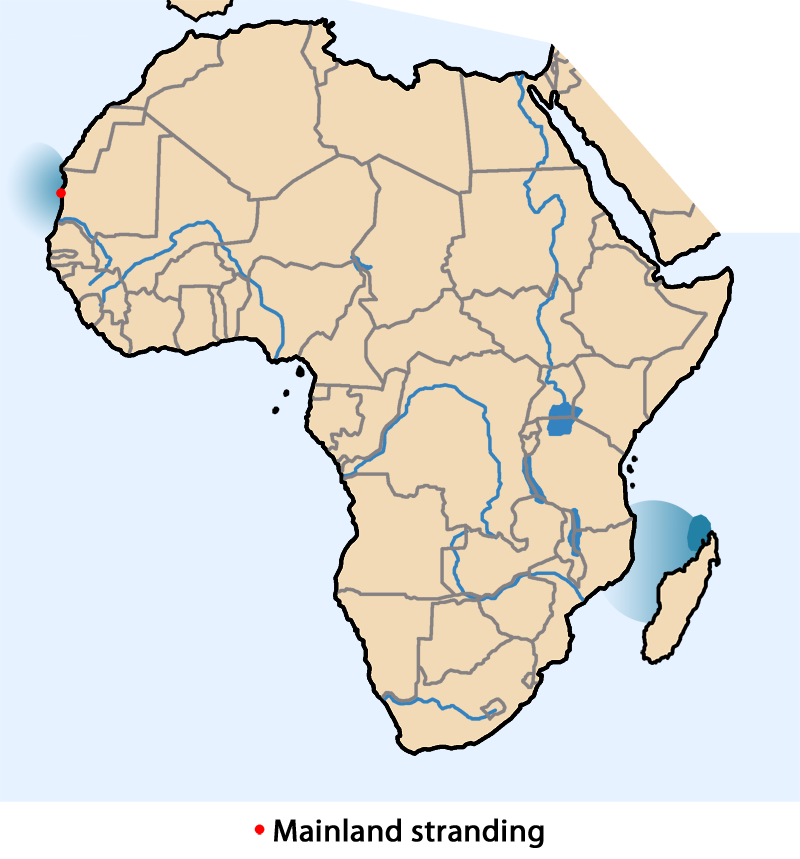
GENUS CERCOPITHECUS - PAGE 120 - OCTOBER 2015:
Readers will note that we split the Southern African Sykes's (Cercopithecus albogularis) and Blue monkeys (Cercopithecus mitis) into two species. Recent thinking has placed all now into the species Cercopithecus mitis with upwards of 17 subspecies across its wide southern, central and East African range. This is the line we will be following in our revision of the STUARTS' FIELD GUIDE TO LARGER MAMMALS OF AFRICA. However, there is considerable debate as to whether the single species, or multiple species, should be recognized.
NEW SPECIES ADDED TO THE GREATER SOUTHERN AFRICAN MAMMAL LIST- APRIL 2015
Researchers and taxonomists have recently added 7 new species to the list of Greater Southern African mammals. Most were previously classified as subspecies of another existing species.
SHREWS
Myosorex gnoskei- Occurs on the Nyika Plateau, northern Malawi in the region.
BATS
Scotophilus mhlanganii- Known from Kruger National Park and KwaZulu-Natal, South Africa, as well as near Lusaka, Zambia. It is closely related to Scotophilus dinganii but has been separated on genetic grounds, as well as by its echolocation calls. In addition it is marginally smaller.
Miniopterus africanus- Occurs from Ethiopia, south to Botswana and Namibia. Previously considered to be a subspecies of Miniopterus inflatus.
RODENTS
Hylomyscus anselli- Occurs in the north-east Zambian highlands from 1220-2300 m asl. Previously a subspecies of Hylomyscus (Praomys) denniae.
Hylomyscus acrimontensis- Extends from the Misku Mountains in northern Malawi, extending into Tanzania, from 900-2410 m asl.
Praomys coetzeei- From Duque de Bragauca, Angola.
Otomys uzungwensis- From Nyika Plateau, northern Malawi from 1800-2750 m asl. Extends north into Tanzania.
Black-tailed Tree Rat Thallomys nigricauda (page 202-204) February 2015
Behaviour: In the Pro-Namib fringe on a farm near Helmeringhausen, Namibia we trapped this tree rat (2 specimens- a male and a female) on a rocky cliff with deep crevices. Although there were several Camel Thorn trees growing in the adjacent river bottom all were relatively small and we found no sign of natural tree cavities or stick nests of this species in them. As far as we are aware this is the first record of this species utilizing rock crevices as retreats.
